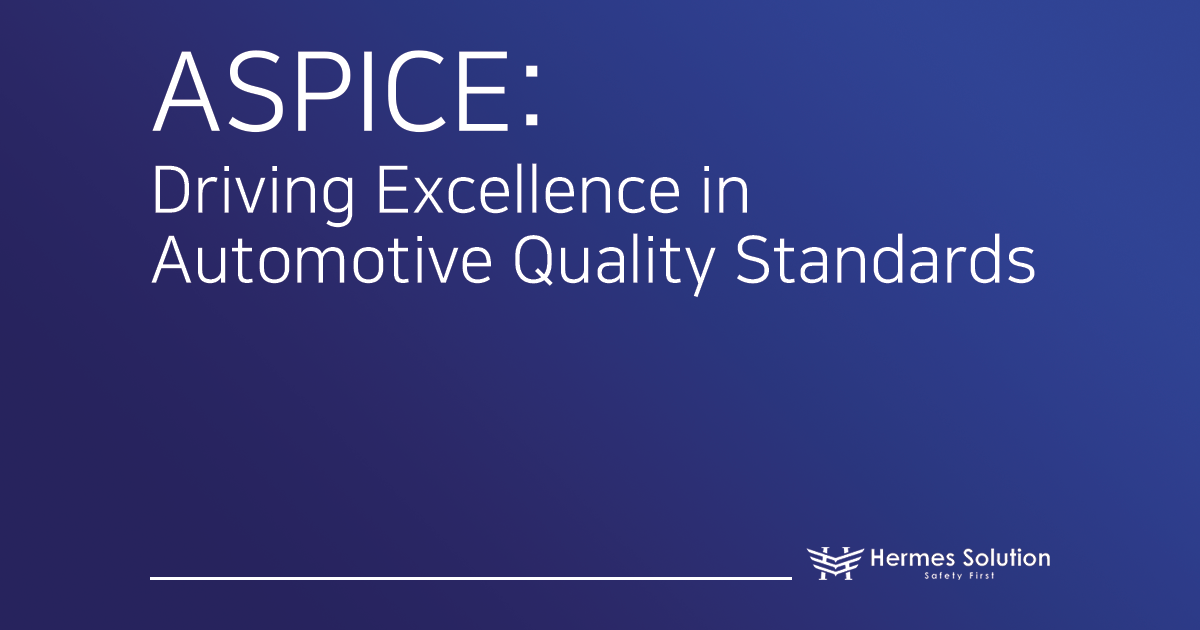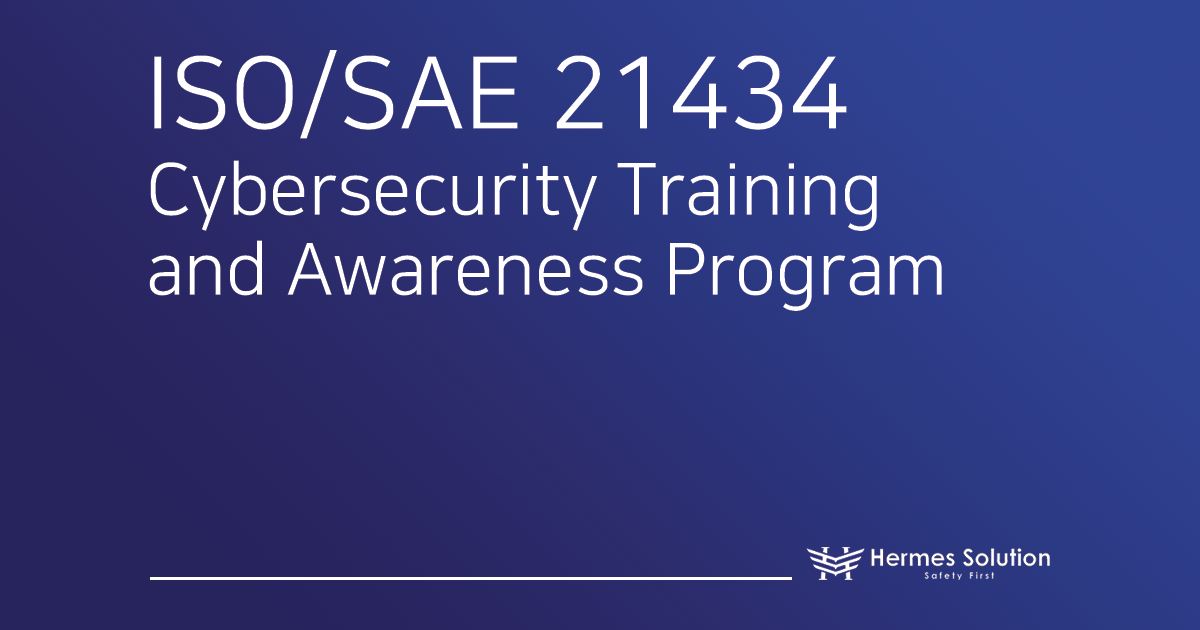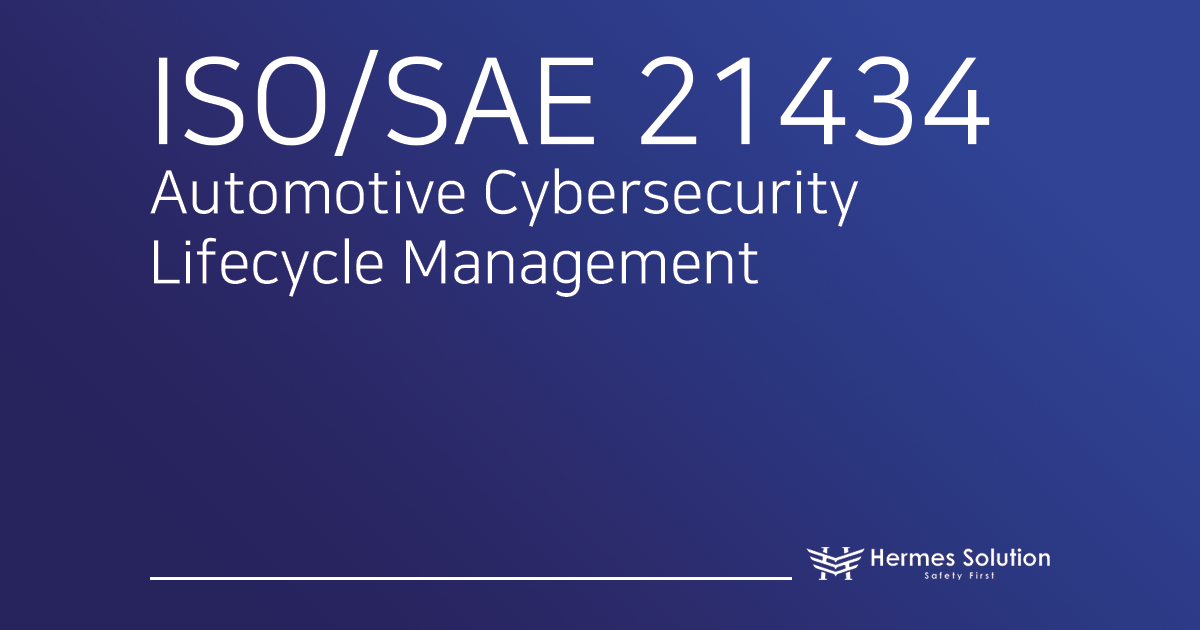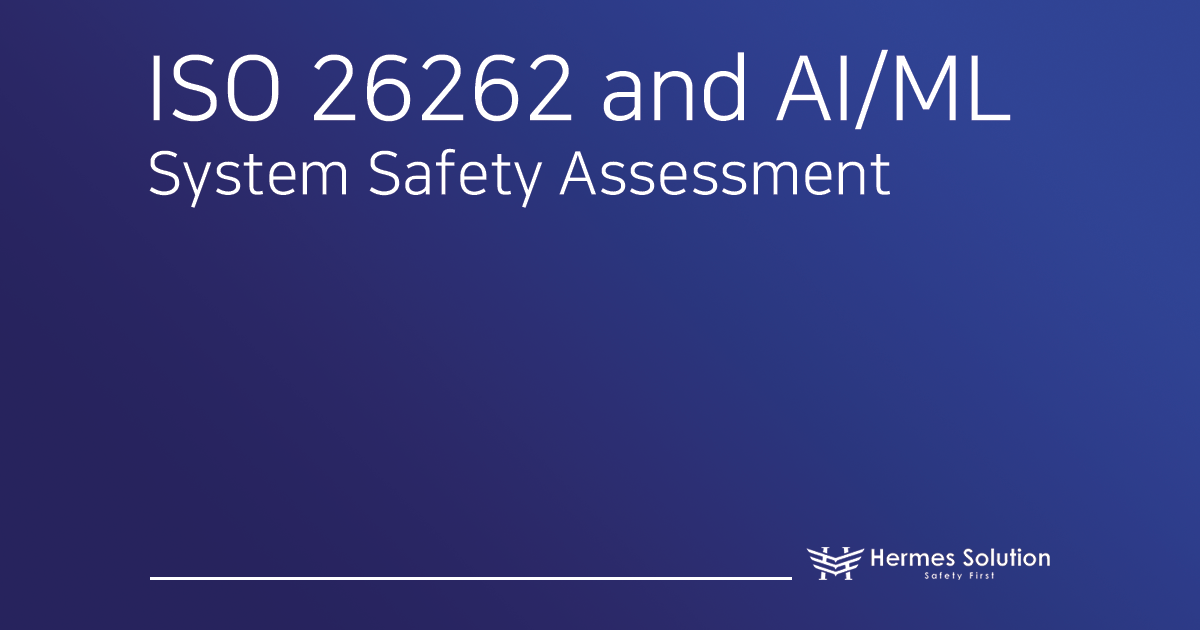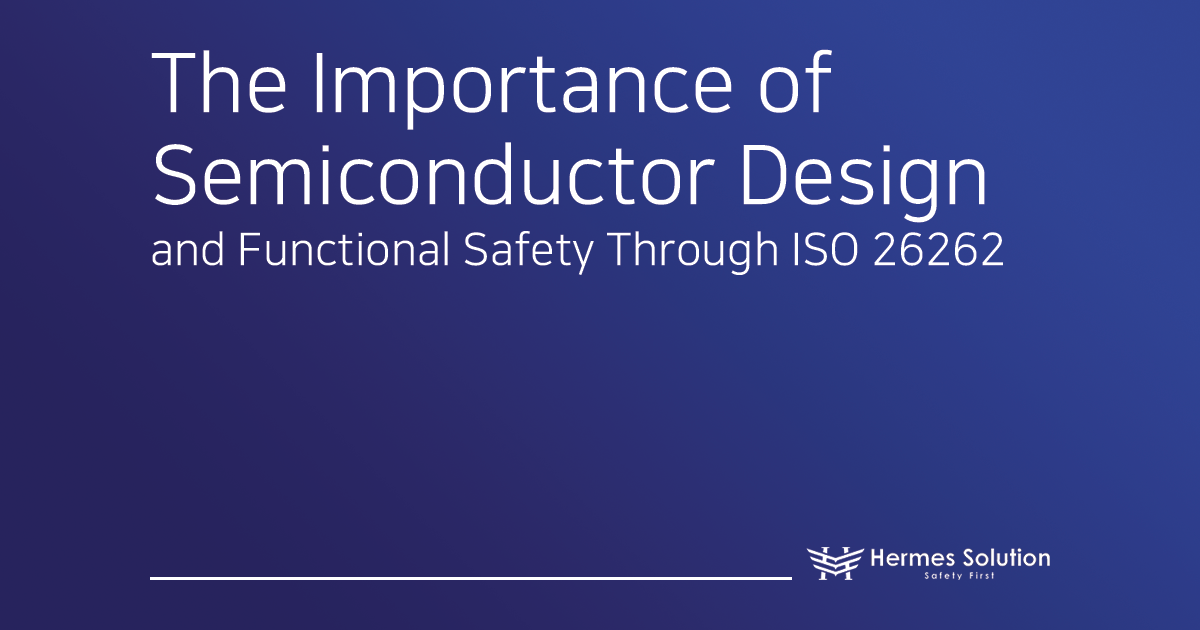Hello. Engineers, this is Hermes Solutions!
In the automotive industry, where safety is a top priority, the ISO 26262 functional safety standard is becoming increasingly important. Effective implementation of this standard requires more than just technical changes, it requires a cultural shift throughout the organization. Today, we’ll take a look at how to manage organizational culture to successfully implement ISO 26262, focusing on global trends and digital transformation practices.
ISO 26262 and safety culture
ISO 26262 is the international standard for Functional Safety of Automotive Electrical and Electronic (E/E) Systems, which codifies safety requirements throughout the development process. The standard provides procedures to ensure safety throughout the product lifecycle, from conceptual design, system implementation, validation/inspection, production, operation, and disposal. In particular, the second edition, published in 2018, reflects the latest technological trends by expanding the scope of application from passenger cars to all road vehicles, including two-wheelers (motorcycles), buses, and trucks, and adding guidelines for semiconductor development.
One of the most emphasized aspects of ISO 26262 is the establishment of a safety culture. Part 2 of the standard (functional safety management) calls for the establishment of a company-wide safety policy and culture, led by management. In fact, according to the ISO 26262 definition, a safety culture is an enduring set of values, attitudes, motivations, and knowledge shared by all members of an organization that prioritizes safety over competitive objectives (ISO 26262-1:2018).
Because it’s difficult for functional safety processes to function effectively without strong executive support and company-wide engagement, the standard aims to create a real safety-centric organizational culture rather than a formal certification. One functional safety expert from an automotive manufacturer likened implementing functional safety in an organization to evolving from a caterpillar to a butterfly, emphasizing that establishing a safety culture is an evolutionary process of steady effort, not a quick fix.
Key elements of building a safety culture
Here are the key elements of building a safety culture:
Safety is prioritized over cost or schedule
Ensure you have the authority to stop projects when safety violations are discovered
Ensure that those responsible for upholding safety requirements are properly authorized
Requires sufficient resource allocation and training
Established company culture where safety is a top priority
Trends in building a global safety culture
The world’s leading automakers and component suppliers recognize functional safety as a key component of their competitive advantage and are implementing a variety of strategies to build a safety culture. BMW, Toyota, and Volvo were early adopters of ISO 26262, embedding it into their development processes and creating dedicated organizations and personnel to support it.
Volvo, in particular, is known for pursuing some of the most stringent safety standards in the industry under the philosophy that “safety is the brand,” and this corporate culture is highly trusted by consumers. BMW has increased the number of functional safety officers from 20 to 200 as a standalone department to strengthen functional safety, while Bosch has created a dedicated ISO 26262 business unit and expanded it to 100 people.
On the other hand, companies that have experienced major recalls or incidents are focusing on preventing recurrence by improving organizational culture. For example, GM, which experienced a massive defect cover-up in the past, launched a “speak up, don’t hide when it comes to safety” campaign to create a culture where employees feel free to report issues. This shift from a passive/reactive culture to a proactive/preventive culture is a common trend in the global automotive industry.
Improving safety culture with digital twins
Digital twin technology, which creates a twin model of a physical product in a virtual space, has emerged as an innovative tool for improving safety in the automotive sector. A digital twin is a cyber-physical replica that behaves almost identically to a real-world physical system, receiving real-time data from sensors, feeding it into the virtual model, and simulation results back into the real-world system.
For example, a digital twin of a vehicle would receive continuous input from the real vehicle’s driving data and environmental information, updating the virtual vehicle in real time and sending optimal control commands or safety improvements discovered in virtual testing to the real vehicle, creating a two-way synchronization between the real and virtual. This structure allows developers to experiment with a myriad of scenarios in a virtual vehicle without having to test a physical vehicle.
In particular, extreme situations or fault conditions that could lead to accidents can be safely recreated virtually to observe the system’s behavior and validate countermeasures. This is essential for ensuring the reliability of highly complex systems like autonomous vehicles, and can have a similar effect as hundreds of millions of kilometers of road testing on real roads.
Digital twins contribute to a culture of safety by efficiently performing the thorough validation required by ISO 26262 in a virtual space. ISO 26262 emphasizes the development and testing of hierarchical V-models at the system, subsystem, and component level, and in a digital twin environment, these step-by-step tests can be performed early without the need for physical prototypes.
Linking environmental, social, and governance (ESG) to safety culture
With the recent rise of ESG management in the automotive industry, sustainability concepts are also being incorporated into safety culture. In the social dimension of ESG, product safety and workplace safety are considered key indicators, while the governance dimension requires a transparent decision-making structure in which management prioritizes safety.
For example, European ESG metrics recommend explicitly tracking product safety investments and the incidence of safety-related recalls, indicating that the level of a company’s safety culture is recognized as a measure of sustainable management. Some of the actual ESG metrics include total spending on product safety and the percentage of product recalls due to safety/health reasons.
Integrating ESG and safety culture
To build a sustainable safety culture, companies are leveraging each element of ESG:
On the environment (E) side, when developing eco-friendly vehicles such as electric and hydrogen vehicles, companies are actively managing safety issues directly related to the environment, such as battery reliability and reducing the risk of fire in the event of a collision, to achieve both eco-friendliness and safety.
On the social (S) side, we prioritize the safety of our employees and customers, implementing accident-free workplace campaigns, safety training that includes suppliers, and transparent disclosure of recall information to customers. For example, Toyota’s global ESG policy states that it will “build a safety-first work culture at its global operations” and emphasizes fostering safety awareness among all employees and supporting supplier safety management.
In terms of governance (G), many companies appoint a chief safety officer to oversee the company’s safety strategy and institutionalize regular board reviews of safety performance and risks.
Many global companies have publicly stated goals, such as zero accident fatalities, and have an ESG strategy to achieve them through technological innovation and organizational culture. For example, in its first sustainability report, Mobilai highlighted the impact of advanced driver assistance in reducing traffic accidents and declared that our ESG mission is to improve safety, efficiency, and accessibility.
Technical framework for applying ISO 26262
Implementing ISO 26262 requires not only a safety culture, but also an appropriate technical framework. The following are the key frameworks for effective ISO 26262 implementation.
Project-independent framework
A safety culture can be jeopardized without proper communication. You need to take a close look at the communication barriers within your organization:
Interdepartmental barriers: Barriers between functions or departments can create invisible walls. These barriers can be caused directly or indirectly by existing company culture.
Working with cybersecurity: As wireless capabilities increase in the automotive industry, cybersecurity becomes a big risk, not only to the product itself, but also to keeping functions safe. Communication between these two functions is essential to balance safety and cyber requirements.
Competency management: Because nearly every function within an organization is impacted by functional safety, most employees require some level of training. Competency management is essential for matching and tracking the right skill level for each role and responsibility.
Issue tracking and resolution: Safety gaps or anomalies should be tracked through to resolution within a formal process. This can be accomplished by aligning your quality management system with ISO 26262.
Project-dependent framework
To run projects effectively, you need to incorporate project-specific requirements within your processes:
Define roles and responsibilities: It is important to clearly define the project’s roles and responsibilities for all safety-related activities, especially the roles of the project manager (PM) and safety manager (SM).
Perform an impact analysis: An impact analysis should be performed to determine the best arrangement for the project. It is important to know which parts of the development cycle are affected.
Adjust the safety lifecycle: The impact analysis will require adjustments to the safety lifecycle. All of this is modified within the safety plan.
Safety plan and safety cases: The safety plan is an important element to effectively track the progress of safety activities. The safety case is the evidence for the safety lifecycle.
Summary
Changing an organization’s culture to adopt ISO 26262 is more than just adopting technology. Successful ISO 26262 implementation requires active support from top management, effective communication, a safety-first culture, clear distribution of roles and responsibilities, and the right management tools.
As the semiconductor and automotive industries have shown, building a safety culture requires a systematic and multifaceted approach. In particular, a leadership-driven safety culture, active participation of employees, and continuous assessment and improvement of safety levels are key elements of an organization’s culture for ISO 26262 implementation.
The automotive industry is now moving towards leveraging innovative tools such as digital twin technology to further strengthen safety culture and ensure sustainability through alignment with ESG management. This strategic approach will go beyond short-term certification and lead to long-term corporate competitiveness and social responsibility.
While the initial process of industry transition to ISO 26262 can be slow, the pace is now accelerating rapidly. Even if there are initial investment costs, the long-term financial benefits are clear. Above all, the true value of ISO 26262 is in protecting lives. If you can save even one more life, that’s a worthwhile change in itself.
We invite you to join us on your journey to successful ISO 26262 implementation.




